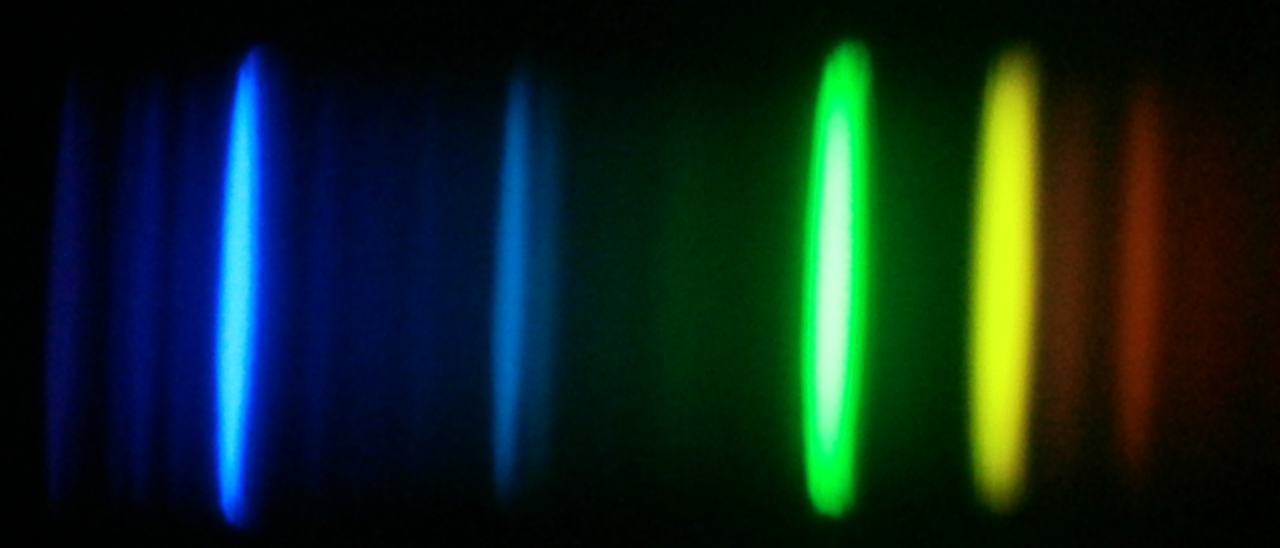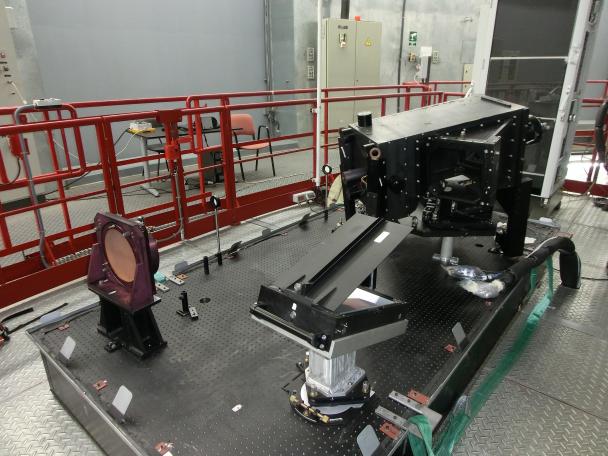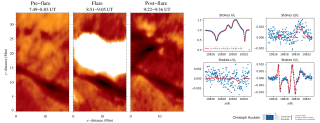Subvenciones relacionadas:
General
La espectroscopía de estrellas nos permite determinar las propiedades y composiciones químicas de las mismas. A partir de esta información para estrellas de diferente edad en la Vía Láctea es posible reconstruir la evolución química de la Galaxia, así como el origen de los elementos más pesados que el boro, forjados principalmente en los interiores estelares. También es posible estudiar la formación estelar, y la de la propia Galaxia, a través de la huella que deja el potencial Galáctico en las órbitas de las estrellas, y de las distribuciones de masa, edad y la abundancia de elementos pesados.
La obtención de espectros con alta resolución espectral, apropiados para estudios de la composición química, requiere instrumentación sofisticada y eficiente. Esto es especialmente cierto en investigaciones en las que se necesitan extensas muestras de estrellas, que exigen observar cientos, o incluso miles de fuentes de forma simultánea. El procesado y análisis de los datos debe ser automatizado para ser igualmente eficiente.
La interpretación de los espectros se basa en modelos físicos de las atmósferas de las estrellas, de donde se escapa la luz que observamos. Los ingredientes fundamentales para la construcción de estos modelos son la dinámica de fluidos, y las propiedades de los átomos, iones y moléculas, especialmente en lo que se refiere a sus interacciones con la radiación que proviene del interior estelar. Una vez que se tiene un modelo plausible, es posible calcular de forma detallada cómo se propaga la radiación a través de la atmósfera estelar, y el espectro emergente, para, de forma iterativa, compararlo con las observaciones y refinar el modelo.
Este Proyecto incluye tres diferentes frentes de investigación:
- La mejora de los modelos de atmósfera y las simulaciones de espectros estelares.
- El desarrollo de herramientas para la obtención, reducción y el análisis de observaciones espectroscópicas, y en particular para la determinación de abundancias químicas en estrellas.
- El diseño, preparación, y ejecución de estudios espectroscópicos de estrellas con el fin de entender a) los aspectos más relevantes de la física de las atmósferas estelares, b) la formación y evolución de las estrellas, c) el origen de los elementos químicos y d) la formación, estructura y evolución química de la Vía Láctea.
Miembros
Resultados
- Completar la instalación y pruebas de HORuS en GTC
- Descubrir dos nuevas estrellas con abundancias de hierro inferiores a 100.000 veces el valor solar
- Completar la clasificación de los espectros de APOGEE con K-means
- Publicar una colección completa de espectros modelo para estrellas O a M
- Identificar la huella de la difusión química en las atmósferas de estrellas del cúmulo M67
Actividad científica
Publicaciones relacionadas
-
The solar gravitational redshift from HARPS-LFC Moon spectra⋆. A test of the general theory of relativity
Context. The general theory of relativity predicts the redshift of spectral lines in the solar photosphere as a consequence of the gravitational potential of the Sun. This effect can be measured from a solar disk-integrated flux spectrum of the Sun's reflected light on Solar System bodies. Aims: The laser frequency comb (LFC) calibration system
González Hernández, J. I. et al.Fecha de publicación:
112020 -
The Gaia-ESO Survey: Calibrating the lithium-age relation with open clusters and associations. I. Cluster age range and initial membership selections
Context. Previous studies of open clusters have shown that lithium depletion is not only strongly age dependent but also shows a complex pattern with other parameters that is not yet understood. For pre- and main-sequence late-type stars, these parameters include metallicity, mixing mechanisms, convection structure, rotation, and magnetic activity
Gutiérrez Albarrán, M. L. et al.Fecha de publicación:
112020 -
Benchmark stars, benchmark spectrographs. Detailed spectroscopic comparison of ESPRESSO, PEPSI, and HARPS data for Gaia benchmark stars
Context. Gaia benchmark stars are selected to be calibration stars for different spectroscopic surveys. Very high-quality and homogeneous spectroscopic data for these stars are therefore required. We collected ultrahigh-resolution ESPRESSO spectra for 30 of the 34 Gaia benchmark stars and made them public. Aims: We quantify the consistency of the
Adibekyan, V. et al.Fecha de publicación:
102020 -
K2-111: an old system with two planets in near-resonance
This paper reports on the detailed characterization of the K2-111 planetary system with K2, WASP, and ASAS-SN photometry, as well as high-resolution spectroscopic data from HARPS-N and ESPRESSO. The host, K2-111, is confirmed to be a mildly evolved (log g = 4.17), iron-poor ([Fe/H] = -0.46), but alpha-enhanced ([α/Fe]=0.27), chromospherically quiet
Mortier, A. et al.Fecha de publicación:
102020 -
The GALAH Survey: non-LTE departure coefficients for large spectroscopic surveys
Massive sets of stellar spectroscopic observations are rapidly becoming available and these can be used to determine the chemical composition and evolution of the Galaxy with unprecedented precision. One of the major challenges in this endeavour involves constructing realistic models of stellar spectra with which to reliably determine stellar
Amarsi, A. M. et al.Fecha de publicación:
102020 -
A precise architecture characterization of the π Mensae planetary system★
Context. The bright star π Men was chosen as the first target for a radial velocity follow-up to test the performance of ESPRESSO, the new high-resolution spectrograph at the European Southern Observatory's Very Large Telescope. The star hosts a multi-planet system (a transiting 4 M ⊕ planet at ~0.07 au and a sub-stellar companion on a ~2100-day
Damasso, M. et al.Fecha de publicación:
102020 -
HORuS transmission spectroscopy of 55 Cnc e
The High Optical Resolution Spectrograph (HORuS) is a new high-resolution echelle spectrograph available on the 10.4-m Gran Telescopio Canarias (GTC). We report on the first HORuS observations of a transit of the super-Earth planet 55 Cnc e. We investigate the presence of Na I and Hα in its transmission spectrum and explore the capabilities of
Tabernero, H. M. et al.Fecha de publicación:
82020 -
Geometry of the Draco C1 Symbiotic Binary
Draco C1 is a known symbiotic binary star system composed of a carbon red giant and a hot, compact companion—likely a white dwarf—belonging to the Draco dwarf spheroidal galaxy. From near-infrared spectroscopic observations taken by the Apache Point Observatory Galactic Evolution Experiment (APOGEE-2), part of Sloan Digital Sky Survey IV, we
Lewis, Hannah M. et al.Fecha de publicación:
92020 -
Characterization of the K2-38 planetary system. Unraveling one of the densest planets known to date
Context. An accurate characterization of the known exoplanet population is key to understanding the origin and evolution of planetary systems. Determining true planetary masses through the radial velocity (RV) method is expected to experience a great improvement thanks to the availability of ultra-stable echelle spectrographs. Aims: We took
Toledo-Padrón, B. et al.Fecha de publicación:
92020 -
APOGEE Data and Spectral Analysis from SDSS Data Release 16: Seven Years of Observations Including First Results from APOGEE-South
The spectral analysis and data products in Data Release 16 (DR16; 2019 December) from the high-resolution near-infrared Apache Point Observatory Galactic Evolution Experiment (APOGEE)-2/Sloan Digital Sky Survey (SDSS)-IV survey are described. Compared to the previous APOGEE data release (DR14; 2017 July), APOGEE DR16 includes about 200,000 new
Jönsson, Henrik et al.Fecha de publicación:
92020 -
The Pristine Inner Galaxy Survey (PIGS) II: Uncovering the most metal-poor populations in the inner Milky Way
Metal-poor stars are important tools for tracing the early history of the Milky Way, and for learning about the first generations of stars. Simulations suggest that the oldest metal-poor stars are to be found in the inner Galaxy. Typical bulge surveys, however, lack low metallicity ( $\rm {[Fe/H]} \lt -1.0$ ) stars because the inner Galaxy is
Arentsen, Anke et al.Fecha de publicación:
72020 -
Strong chemical tagging with APOGEE: 21 candidate star clusters that have dissolved across the Milky Way disc
Chemically tagging groups of stars born in the same birth cluster is a major goal of spectroscopic surveys. To investigate the feasibility of such strong chemical tagging, we perform a blind chemical tagging experiment on abundances measured from APOGEE survey spectra. We apply a density-based clustering algorithm to the 8D chemical space defined
Price-Jones, Natalie et al.Fecha de publicación:
72020 -
Revisiting Proxima with ESPRESSO
Context. The discovery of Proxima b marked one of the most important milestones in exoplanetary science in recent years. Yet the limited precision of the available radial velocity data and the difficulty in modelling the stellar activity calls for a confirmation of the Earth-mass planet. Aims: We aim to confirm the presence of Proxima b using
Suárez Mascareño, A. et al.Fecha de publicación:
72020 -
Helium Enhancement in the Metal-rich Red Giants of ω Centauri
The helium-enriched (He-enriched) metal-rich red giants of ω Centauri, discovered by Hema & Pandey using the low-resolution spectra from the Vainu Bappu Telescope, and confirmed by the analyses of the high-resolution spectra obtained from the HRS-South African Large Telescope for LEID 34225 and LEID 39048, are reanalyzed here to determine their
Hema, B. P. et al.Fecha de publicación:
72020 -
The 16th Data Release of the Sloan Digital Sky Surveys: First Release from the APOGEE-2 Southern Survey and Full Release of eBOSS Spectra
This paper documents the 16th data release (DR16) from the Sloan Digital Sky Surveys (SDSS), the fourth and penultimate from the fourth phase (SDSS-IV). This is the first release of data from the Southern Hemisphere survey of the Apache Point Observatory Galactic Evolution Experiment 2 (APOGEE-2); new data from APOGEE-2 North are also included
Ahumada, Romina et al.Fecha de publicación:
72020 -
The Stellar Velocity Distribution Function in the Milky Way Galaxy
The stellar velocity distribution function in the solar vicinity is reexamined using data from the Sloan Digital Sky Survey Apache Point Observatory Galactic Evolution Experiment (APOGEE) survey's DR16 and Gaia DR2. By exploiting APOGEE's ability to chemically discriminate with great reliability the thin-disk, thick-disk, and (accreted) halo
Anguiano, Borja et al.Fecha de publicación:
72020 -
The Pristine survey - X. A large population of low-metallicity stars permeates the Galactic disc
The orbits of the least chemically enriched stars open a window on the formation of our Galaxy when it was still in its infancy. The common picture is that these low-metallicity stars are distributed as an isotropic, pressure-supported component since these stars were either accreted from the early building blocks of the assembling Milky Way (MW)
Sestito, Federico et al.Fecha de publicación:
22020 -
The Lazy Giants: APOGEE Abundances Reveal Low Star Formation Efficiencies in the Magellanic Clouds
We report the first APOGEE metallicities and α-element abundances measured for 3600 red giant stars spanning a large radial range of both the Large (LMC) and Small Magellanic Clouds, the largest Milky Way (MW) dwarf galaxies. Our sample is an order of magnitude larger than that of previous studies and extends to much larger radial distances. These
Nidever, David L. et al.Fecha de publicación:
62020 -
NLTE for APOGEE: simultaneous multi-element NLTE radiative transfer
Context. Relaxing the assumption of local thermodynamic equilibrium (LTE) in modelling stellar spectra is a necessary step to determine chemical abundances to better than about 10% in late-type stars. Aims: We describe our multi-element (Na, Mg, K, and Ca) non-LTE (NLTE) calculations, which can be applied to the APOGEE survey. Methods: The new
Osorio, Y. et al.Fecha de publicación:
52020 -
Nightside condensation of iron in an ultrahot giant exoplanet
Ultrahot giant exoplanets receive thousands of times Earth's insolation 1,2. Their high-temperature atmospheres (greater than 2,000 kelvin) are ideal laboratories for studying extreme planetary climates and chemistry 3-5. Daysides are predicted to be cloud-free, dominated by atomic species 6 and much hotter than nightsides 5,7,8. Atoms are expected
Ehrenreich, David et al.Fecha de publicación:
32020
Charlas relacionadas
No se han encontrado charlas relacionadas.Congresos relacionados
No se han encontrado congresos relacionados.Noticias
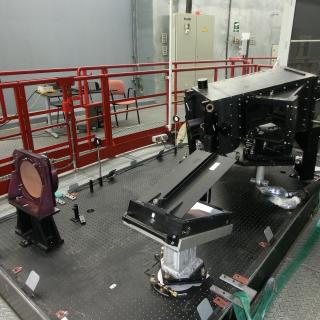
Espectrógrafo de alta resolución en operación en el Gran Telescopio Canarias (GTC) de 10m. usando componentes del espectrógrafo UES, utilizado en el Telescopio William Herschel (WHT) de 4.2 m. entre los años 1992 y 2001.
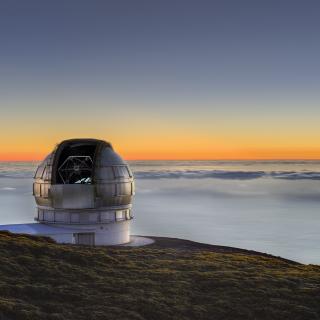
El Gobierno español concede la Acreditación como Centro de Excelencia Severo Ochoa con el fin de reconocer, premiar y promover la investigación científica de alto nivel en los centros y unidades españoles que tengan un alto nivel de excelencia en el ámbito internacional. Los objetivos específicos del Programa Severo Ochoa son: - Mejorar la
